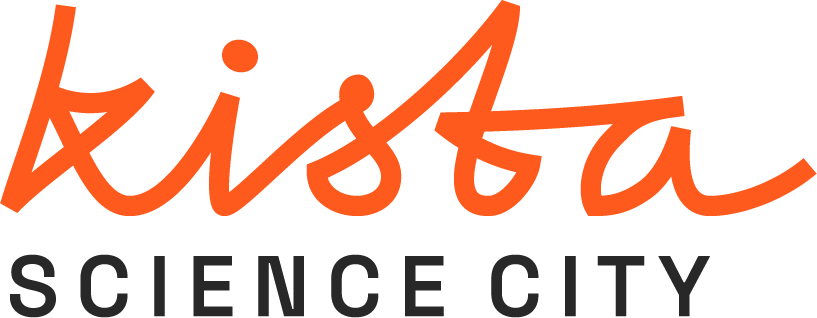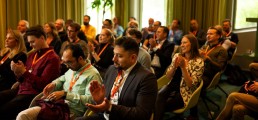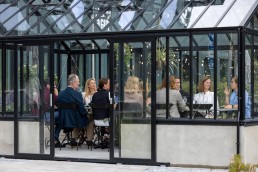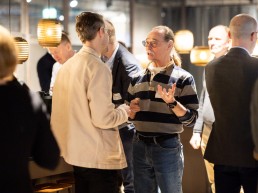A national innovation hub to enhance cybersecurity
SMEs are the backbone of the Swedish economy but are also the most vulnerable to cyberattacks. The Sweden Secure Tech Hub aims to help SMEs of all sizes improve their cybersecurity posture, whether they are just getting started or looking to take their cybersecurity to the next level.
The hub will offer a variety of activities to help SMEs, including needs assessments, networking events, training, seminars, and technical, financial, and legal expert assistance. The goal is to help SMEs develop secure products and services, sharpen their competitiveness, and protect their data and systems from cyberattacks.
Karin Bengtsson, CEO of Kista Science City, highlights the importance of cybersecurity in the digital age:
“To succeed in digitization, it is important that companies have a good understanding of cybersecurity risks. We offer an opportunity for companies to increase their knowledge and ability to protect themselves from cyberattacks.”

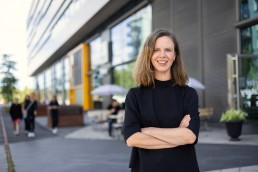
Sweden ICT, the organization behind Sweden Secure Tech Hub, is a collaboration between six of Sweden’s leading science parks in tech and digitalization: Linköping Science Park, Lindholmen Science Park (Västsverige), Ideon Science Park (Lund), Kista Science City (Stockholm), Luleå Science Park, and Blue Science Park (Karlskrona). Together, we represent an ecosystem with over 2,400 companies and 59,000 employees.
Sweden Secure Tech Hub has been designated by the EU as a European Digital Innovation Hub (EDIH) and has been tasked with supporting and strengthening companies and society in their secure digitalization efforts.
The work is funded by the European Regional Development Fund, Tillväxtverket, and Region Blekinge, in collaboration with the participating partners.
If you want to learn how to take part of upcoming activities, please contact:
Karin Bengtsson, CEO, Kista Science City
Email: karin.bengtsson@kista.com
Emma Sturesson, Project Manager, Blue Science Park
Email: emma.sturesson@bluesciencepark.se
Sweden Secure Tech Hub
Sweden Secure Tech Hub
A national innovation hub for cybersecurity
Sweden Secure Tech Hub is a national alliance of science parks with the mission to improve secure digitalization in Sweden.
By joining forces we aim to lower the threshold for startups, scaleups and SME’s to approach and implement cybersecurity measures and strategies.
Through our science parks Sweden Secure Tech Hub will offer a full range of services to help companies build cybersecurity readiness without investing more than their own time. Beyond the standardized program for SMEs each science park has something unique to offer depending on the needs of the companies.
The key objective for Sweden Secure Tech Hub is to increase the knowledge and understanding of how cyberattacks and cybersecurity can affect business progress in both negative and positive ways. The hub will support and work with companies to achieve new internal processes, policies, guiding principles for future development and tools to test and validate new products and services.
Businesses enrolled in the hubs program are welcome to partake in physical and digital seminars, networking meet-ups, educational modules as well as off the shelf services within finance, tech and law.
The initiative is funded by the European Union through the program for European Digital Innovation Hubs (EDIH), Tillväxtverket, regional funding and the participating science parks.
Nationellt forum för trygghet i stadsrummet - fokus på integritet och etik
En ny nationell mötesplats ska fokusera på hur vi kan utveckla kloka IoT-lösningar som kan att öka tryggheten i det offentliga rummet, samtidigt som individens integritet skyddas.
Trygghet på gator och torg är ett komplext problem som kräver innovativa arbetssätt. Nya teknologier, som IoT-sensorer och artificiell intelligens (AI), har stor potential att bidra till att minska otryggheten. Sensorer kan användas för att observera ljusförhållanden och trafikflöden, vilket kan bidra till en mer inbjudande miljö. Sensorer är också intressant för att förstå hur invånare använder allmänna platser. AI kan användas för att analysera data från sensorerna och identifiera både potentiella risksituationer som situationer som upplevs trivsamma. En sådan analys bidrar till ökad kunskap om nuläge samt kan effektivisera de insatser som görs för att öka attraktivitet och upplevd trygghet.
Det är dock viktigt att nya teknologier används på ett ansvarsfullt sätt och då krävs en mycket god förståelse för integritet och etik.
Tidigare i år startades Trygghetslabbet i Kista, ett innovationslabb som samlar företag, fastighetsägare, kommuner och akademi för att utveckla nya arbetssätt för ökad trygghet i staden. Trygghetslabbet bidrar också till att utveckla marknaden för ny teknik och skapa nya affärer. Här pågår under hösten en pilot som undersöker integritetsfrågor i samband med mätning av vistelsemönster på gator och torg. Piloten genomförs tillsammans med Stockholms stad, IoT Sverige och Integritetsskyddsmyndigheterns (IMY) regulatoriska testverksamhet.
Nu kompletteras Trygghetslabbet med ett nytt strategiskt projekt på uppdrag av IoT Sverige. Svenska städer som arbetar aktivt med trygghet i staden och Internet of Things-tekniker samlas till en nationell mötesplats, ett forum, för erfarenhetsutbyte och lärande. Forumet kommer att fokusera på integritet, som är adresserat i dataskyddsförordningen (GDPR), och etik.
Forumet är ett samarbete mellan Kista Science City, IoT Sverige och flera svenska städer som arbetar aktivt med att hitta lösningar för ökad trygghet i staden.
Unikt för forumet är att det samlar många olika roller, från kommuner, städer och även leverantörer och experter. Detta möjliggör många perspektiv i diskussioner om komplexa frågor, något som varit efterfrågat.
Vanessa Ware, projektledare på Kista Science City, säger att samarbete och kunskapsdelning är avgörande för att utvecklahållbara lösningar på problemet med trygghet i offentliga miljöer. ”Genom att samlas och dela kunskap kan vi superboosta utvecklingen av ett komplext område som trygghet på allmänna platser. Det här forumet är nischat och till för dem som ligger i framkant. Området har stor potential och när vi hjälps åt kan vi komma framåt snabbare och lyckas skapakloka lösningar för den hållbara staden,” säger Vanessa.
Under hösten 2023 kommer forumet att erbjuda en serie workshops för att stärka deltagarnas kunskap och kompetens inom området.
Målsättningen är att stärka deltagarna i forumet i området juridik och etik inom trygghet i offentlig miljö och IoT samt att identifiera möjligheter och utmaningar att arbeta vidare med.
Bo Baudin, IoT Sverige, menar att det är viktigt att beakta integritets- och etiska aspekter i tidigt i utvecklingen av nya datadrivna tillämpningar
“Det arbete vi nu gör inom området trygghet i stadsrummet kommer bidra generellt till hur vi bäst arbetar med integritet och etik i utvecklingen av Internet of Things” , säger Bo Baudin, IoT Sverige.
Företag som är intresserade av att delta eller veta mer kan kontakta Vanessa Ware!
Läs mer om arbetet som sker inom trygghet med hjälp av ny teknik.
Welcome Week
Welcome Week
Reflecting on Welcome Week 2023, an initiative for connecting companies and students in the vibrant tech scene of Kista Science City.
As an annual highlight in Kista’s tech calendar, Welcome Week brings together academic life and professional opportunities. The week offers a unique platform for local companies to showcase their work and to network with the next generation of talent. Both newcomers and returning students have seized the opportunity to gain a deeper understanding of the community that they are becoming a part of.
Welcome week includes a range of collaborative activities, from industry-focused seminars to casual networking lunches and interactive tech demos. Students gain valuable insights into the diverse career paths and opportunities that Kista’s ecosystem offers beyond academia, enriching the educational journey with real-world perspectives.
Mikaela Färnqvist, Community Manager at Kista Science City, shares her thoughts on the week:
”Welcome week is all about bringing people together. During these events, we see key players from the tech industry meet and connect with the students here in Kista. I’m really looking forward to seeing what new opportunities will come from the meetings.”
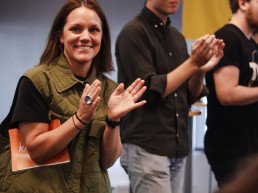
Welcome Week is an annual, collaborative effort involving several Kista businesses and academia centers, including and DISK / Stockholm University, IN-sektionen / KTH, Ericsson, Fujitsu, and IBM.
For companies, this event provides a great opportunity for connections with students, not just during Welcome Week, but also year-round.
Reach out to Mikaela if you want to participate in next event.
Navigating the skies: Drones and urban mobility
Navigating the skies: Drones and urban mobility
How can drones help cities become safer, more efficient, and sustainable? During Mobility Day 2023, experts in urban mobility and drone technology gathered for a panel discussion on this topic, addressing the transformative potential and challenges of integrating drones into urban transportation systems.
In the evolving urban environments of today, drones are rapidly becoming integral to modern urban transport strategies. The panel – featuring representatives from RISE, The City of Stockholm, Ericsson Drone Mobility, Region Stockholm, ATS Bromma and LFV – emphasized that drones have the potential to redefine a broad range of services. From efficient package deliveries to life-saving medical supplies like automated defibrillators, drones offer a flexible and eco-friendly alternative to traditional transport methods. With the right infrastructure, it’s anticipated that drone transport could replace up to 75% of express deliveries in the future.
However, innovation doesn’t come without its challenges. Regulatory constraints present a significant bottleneck, especially around permits and urban airspace ownership. Navigating these legal frameworks involves coordination between different layers of governance – from local municipalities to EU level. The panel also underscored behavioral challenges, noting that public perceptions, concerns and acceptance of drones in urban spaces play a vital role in their successful integration. There’s need for ongoing conversations, not just among cities, innovators, and policymakers, but also with the public to streamline regulations and create a supportive setting for drone integration into urban mobility.
On the technical side, allowing drones to operate beyond the pilot’s visual range brings up some specific challenges. These include not just limited control range but also concerns in other areas like data security and public safety, especially in high-density urban areas. During the panel discussion, it was noted that advancements in 5G connectivity are essential for improving the reliability and safety of drone operations in these settings. This technological progress, in turn, requires close cooperation between drone companies and mobile network providers to fine-tune network performance specifically for drones.
In conclusion, tackling these challenges calls for a collaborative, multi-disciplinary approach. The path forward lies in aligning not just on regulations but also on infrastructure, financing, and, not least, public acceptance. By establishing a shared vision and mutual understanding among all stakeholders, the acceleration of drone deployment in cities becomes not a question of “if” but “when”. As cities like Stockholm aim for ambitious sustainability goals, drone integration stands as a powerful means to achieve them.
Thanks to our panelists for contributing to this discussion:
Rasmus Lundqvist of RISE
Erik Levander of The City of Stockholm Transport Department
Anders Carlsson of ATS Bromma, LFV
Fredrik Flyrin of Ericsson Drone Mobility
Fredrik Engströmer of Region Stockholm
Karolina Pamp of Kista Science City
Learn more about ongoing activities in the area of Drones and Urban air mobility.
Reach out to Karolina if you want to talk more!
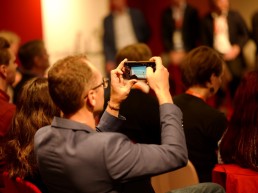
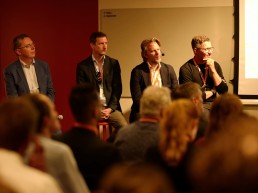
The power of data sharing
Towards sustainable mobility: The power of data sharing
How can data make our transportation systems more efficient, eco-friendly, and tailored to people’s needs? A session during Mobility Day 2023 took on this big question, with experts in the field discussing how data isn’t just about numbers – it’s a key tool for making urban mobility smarter and more sustainable.
The panel – featuring representatives from Voi Technologies, The Swedish Transport Administration, The City of Stockholm and Univrses – highlighted the critical role of data in shaping a sustainable future for urban mobility.
The key takeaway was clear: relevant and actionable data is a critical element in creating transportation systems that are both resource-efficient and aligned with the needs of the community. For instance, the use of connected vehicles was described as a game-changing approach to collecting detailed data on traffic flow and user behavior, which can then inform everything from day-to-day road maintenance to long-term urban planning initiatives.
Shifting from the mere collection of data, the discussion also touched on its real-world applications. For transformative change, data needs to be part of multi-disciplinary strategies involving software developers, urban planners, and policymakers alike. This is where standardization becomes crucial. Consistent data-sharing protocols, developed and maintained at both national and international levels, were mentioned as a driving-force for the next big leaps in transportation efficiency and sustainability.
The panel also emphasized that the value of data goes beyond guiding vehicles or informing decision-makers; it’s also key in shaping public behavior and influencing policy. Understanding travel patterns and time metrics, for example, can help refine the system and ultimately encourage more sustainable mobility choices. Ethical considerations, particularly regarding data privacy and compliance with GDPR guidelines, were underscored as essential for responsibly moving towards a data-driven future.
Looking ahead, it’s clear that data and data-sharing will be central in advancing more sustainable and efficient mobility solutions, not least in urban areas. Working together – across industries and borders – is key. As Stockholm and Sweden work towards meeting ambitious sustainability goals, the effective use of data stands out as a common thread tying many efforts together.
Thanks to our panelists for contributing to this interesting discussion!
Gustaf Soldan Patrikson of Voi Technologies
Anders Asp of The Swedish Transport Administration
Robin Billsjö of The City of Stockholm
Jonathan Selbie of Univrses
Lucas Uhlén of Kista Science City
Curious about the topic and want to talk more? Reach out to Lucas!
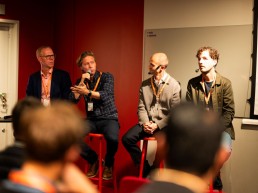
Celebrating Kista All Stars
Celebrating Kista All Stars
Throughout this year, many innovators and companies from Kista has received esteemed awards and made it to prestigious lists. To celebrate their achievements, we’re presenting Kista All Stars.
Kista All Stars highlights the dedication, courage and hard work of these individuals and organizations. It also reflects the rich and diverse talent we have among us in Kista. From pioneering technological advancements to innovative startups and leaders driving sustainability, education and community engagement. These contributions pave the way for a brighter future.
In further celebration of the Kista All Stars, Kista Science City hosted a special lunch event. This gathering provided an opportunity for participants to engage with the vast variety of backgrounds within the Kista community, exchange knowledge, and foster collaborations.
Full list of Kista All Stars below.


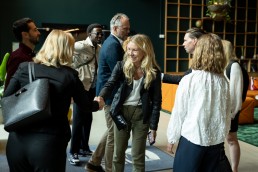
KISTA ALL STARS
Binette Seck * Changers Hub/Changers Tech * Obama Leader 2023
Pressinbjudan (svenska) Mobility Day 2023
PRESSINBJUDAN:
Mobility Day, 30 augusti 2023
Kista Science City i samarbete med Ericsson, Stockholms stad och Region Stockholm hälsar dig hjärtligt välkommen till Mobility Day – en unik mötesplats där vi tillsammans formar framtidens hållbara mobilitet och transportlösningar.
Datum: 30 augusti 2023
Tid: 08:30 – 17:00
Plats: Kista Innovation Park, Grönlandsparken (Grönlandsgatan 8), Kista
Resor och transporter står idag för en stor del av alla utsläpp i Sverige, men vi tror på förändring! Genom innovation och nya tekniska lösningar kan vi hitta mobilitetslösningar som möjliggör en klimatsmart framtid. Under årets Mobility Day lyfter vi fram de senaste framstegen inom mobilitetssektorn och hör experter och visionärer dela insikter och tankar kring hållbar transport.
Höjdpunkter under dagen inkluderar:
- Inspirerande tal och seminarier från ledande branschexperter från Stockholms stad, Ericsson, Region Stockholm, Luftfartsverket, KTH, Voi med flera.
- Interaktiva utställningar med demonstrationer av innovativa mobilitetslösningar från Ericsson, Martin & Servera, Falck, Trafikverket, Waybler, Flox Robotics och Stockholms stad.
- Möjlighet att träffa nyckelpersoner och aktörer inom sektorn från bland annat Stockholms stads trafikkontor, Region Stockholm och Ericsson.
Vi vill också erbjuda en specialvisning av utvalda demonstrationer och möjlighet till intervjuer för besökande journalister.
Mobility Day är en plats där vi möts och tillsammans utvecklar regionala och nationella kluster som kopplar samman fordons- och transportindustrin med Stockholms starka aktörer inom tech. Genom att synliggöra kraften och kunskapen kring nya digitaliserade transporttjänster och Stockholm som en intressant plats för att genomföra och testa nya lösningar kan vi få fler företag att samarbeta. Det ger både inspiration för vad som är möjligt och gemensam kraft för att driva en hållbar utveckling framåt.
Mer information om programmet, seminarier, talare, schema för demonstrationer samt deltagande företag finns på Kista Mobility Day, https://mobilityday2023.confetti.events
Vi ser fram emot att ses i Kista den 30 Augusti.
Vänliga hälsningar,
Kista Science City, Ericsson, Stockholms stad och Region Stockholm
För anmälan och frågor:
Maria Rudenschöld, Kommunikationsansvarig, Kista Science City
maria.rudenschold@kista.com tel 072381 90 62
Eva Andersson,Corporate Media, Ericsson
eva.e.andersson@ericsson.com, tel 070 590 50 68
Mobility Day 2023
It’s that time again: Join us for Mobility Day 2023!
Mark your calendars and make sure to sign up for Mobility Day 2023.
Once again, in collaboration with Ericsson, Stockholms stad and Region Stockholm, we’re diving into the crucial interplay between mobility and sustainability, forging a path to a more eco-conscious future.
Mobility and sustainability are now more intertwined than ever before. Although travel and transport contribute significantly to Sweden’s emissions, we hold the power to to make a change. Driven by innovation, emerging business models, and important changes in behavior, we’re not just envisioning a greener future—we’re actively shaping it.
This year’s Mobility Day is designed to drive this change. We’ll be zeroing in on how innovative solutions and fresh business models can support the transition of our transport system, aligning with Sweden’s ambitious climate goals.
Throughout the day, expect a diverse array of stimulating talks, insightful seminars, and compelling pitches. These activities will be complemented by an open-air exhibition featuring demos and informative stands. This unique showcase serves as a dynamic platform for inspiring discussions, offering excellent networking opportunities.
Mobility Day brings together decision-makers from various sectors, including tech, automotive, academia and the public sector, all with a shared focus: innovation for a sustainable and efficient transport system.
Join us in Kista on 30 August, for a day full of knowledge, inspiration and collaborative spirit , as we collectively accelerate the journey toward sustainable mobility solutions.
Highlights of the day:
- Experience innovative concepts and emerging business models propelling us towards Sweden’s ambitious climate goals.
- Engage with experts spanning tech, automotive, academia, and the public sector, all driven by the pursuit of innovative, sustainable transport solutions.
- Delve into a captivating series of discussions, seminars, and pitches covering electrification, connectivity, data sharing, climate-smart drones, and trends in the automotive arena.
- Demo & Exhibition: Step into an open-air showcase featuring electrified vehicles, drones, and more. Connect with industry pioneers, fellow mobility enthusiasts, and future talents.
Event Details:
Date: 30 August, 2023
Location: Kista
Time: 08:30 AM – 05:00 PM
Secure Your Spot:
For more information and registration, visit our event site. See you there!
Mobility day is arranged by Kista Science City together with Ericsson, Stockholms stad and Region Stockholm.
Mobility Day is, through Fordonsdalen React, co-financed by the European Regional Development Fund and by the Region Stockholm Project Fund for sustainable regional development.
Space tech companies are clustering in Kista
Mention the concept of space technology, and interplanetary tourism or moon-based cities may be the first things that spring to mind. But much of contemporary operations in space tech, globally, are focused on observing and monitoring our own planet. Smaller-sized electronic and optronic components have made space tech less expensive, and with edge computing capabilities, massive amounts of earth data, gathered via satellites, can even be processed in orbit.
Kista is home to a number of start-ups and well-established businesses developing solutions for space-based communications and satellite components. In November 2022, OHB Sweden, a former subsidiary of Swedish Space Corporation, and one of the larger players in Kista’s space tech cluster, successfully launched the satellite MATS (Mesospheric Airglow/Aerosol Tomography and Spectroscopy), which is going to measure atmospheric waves and study their impact on the earth’s climate. While MATS is a research satellite, the really big change in space tech is the move toward commercial offerings.
New constellations in rocket science
Satellite-based earth observation is already used in a multitude of applications and business opportunities are growing. One of the space tech start-ups in Kista taking advantage of this shift on the global market towards commercial space-based services is PandionAI. They moved to Kista from Uppsala some 18 months ago. Christer Andersson, one of the company’s co-founders, explains that being a small company—they are three full-time employees—having an office located near other companies in the same field is definitely a benefit to their business.
– A lot of research goes into the development of our satellite constellation and our alert service, of course, says Christer Andersson. We have funding from ESA Business Incubation Centre, Swedish National Space Agency, the ESA Artes BASS program and Vinnova, but R&D resources are scarce. Having our office close to KTH Space Centre here in Kista means that we have been lucky enough to have a number of KTH space tech students and researchers working with us to complete our mission.
– Our concept, explains Christer Andersson, is offering AI-based image interpretations of the earth’s surface, and our customers can subscribe to the data they need for a specific geographic area. Our satellite constellation, AlertSat, will be launched incrementally from late 2025 and onwards. It will provide a global surveillance system, based on small earth-observing satellites, which will provide end users with timely and accurate information that they can use to act on. This information, called Alerts, is based on the changes that satellites detect in orbit from the image data they receive.
– We will launch our own satellite constellation for AlertSat, and I believe that so far, we are the only commercial company in Sweden to have this approach. We will not be building all parts of the satellites ourselves, though, and that is another reason for why we need to work closely together with other companies, with other areas of space tech expertise. Small companies are often experts at one particular aspect of the technology needed, and we will all benefit from helping each other move forward, Christer Andersson concludes.
On a mission to collect space garbage
Many current services relying on satellite information are used for monitoring the health of the earth’s environment. But, with an increasing number of years of human activity in space, even space itself, close to the earth, is starting to be affected by our debris. So much so, that a mission called ClearSpace was founded in 2018, in an attempt to remove debris orbiting the earth, introducing a sustainable approach to space activities. OHB Sweden is part of this initiative, contributing the design of a propulsion system for a satellite which will help remove objects left in orbit.
For many years, equipment has been launched into space with no requirements on how to dispose of these objects as they become obsolete or worn out. The result is that around 36,000 pieces of space garbage are now orbiting the earth, according to ESA—and that is not counting the really small pieces of space tech trash, threatening to crash into spaces vessels in use and damage them.
The demand for services based on satellites supporting sustainability and environmental monitoring is clearly presenting new business opportunities, and as space litter is becoming an increasing problem, those opportunities are likely to expand into space.
